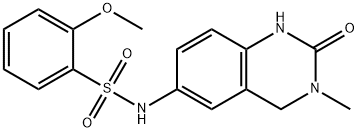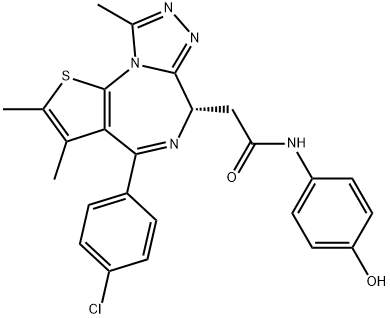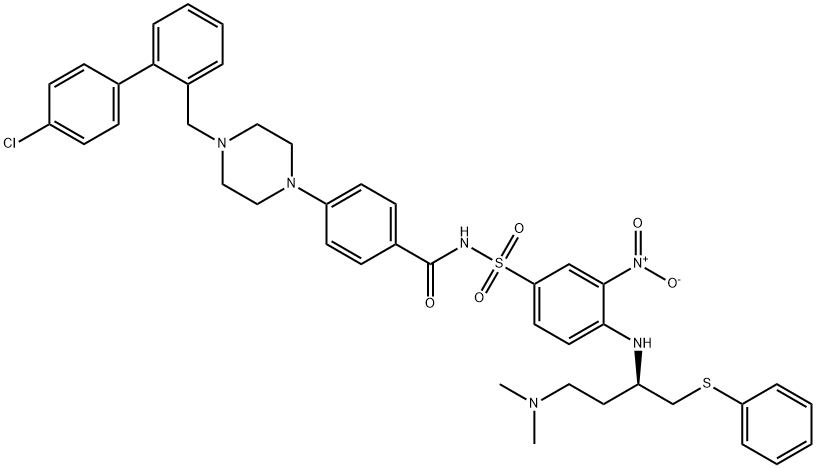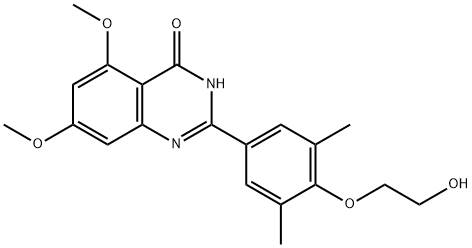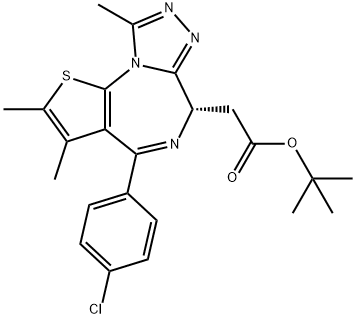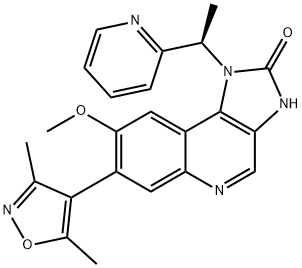CPI-203
- CAS NO.:1446144-04-2
- Empirical Formula: C19H18ClN5OS
- Molecular Weight: 399.9
- MDL number: MFCD27997886
- SAFETY DATA SHEET (SDS)
- Update Date: 2024-11-19 23:02:33
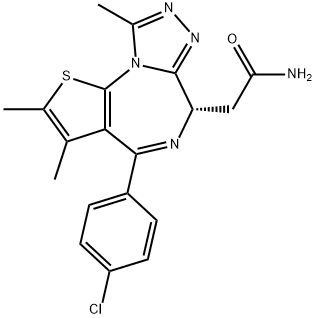
What is CPI-203?
Description
CPI-203 is a primary amide analog of (+)-JQ1, which has shown superior bioavailability with oral or i.p. administration. CPI-203 downregulates Myc expression, causes G1 cell cycle arrest and attenuates cell proliferation in human pancreatic neuroendocrine tumors. CPI-203 also arrests the growth of T cell acute lymphoblastic leukemia cells in vitro (EC50 = 91.2 nM).
The Uses of CPI-203
CPI-203 is a bromodomain and extraterminal domain (BET) inhibitor.
Biological Activity
cpi-203 is a potent, selectivie and competitive small molecule inhibitor of bet bromodomain with a mean gi50 value of 0.23μm in mcl cell lines [1].as an inhibitor of bet proteins, cpi-203 inhibits brd4 in vitro and in cells. it inhibits the specific ser2 phosphorylation of both endogenous brd4 and exogenous mutant brd4 (brd4 fee-aaa) in vivo, thus blocking the recruitment of brd4 to chromatin. cpi-203 is shown to suppress cell growth of 9 mcl cell lines. and in rec-1 cells, treatment of cpi-203 causes the effects of irf4 expression. cpi-203 marginally activates the apoptotic program in these cells. the cpi-203-lenalidomide combination is reported to be a promising strategy in mcl cases refractory to proteasome inhibition [1, 2].
storage
Store at -20°C
References
[1] moros a, rodríguez v, saborit-villarroya i, montraveta a, balsas p, sandy p, martínez a, wiestner a, normant e, campo e, pérez-galán p, colomer d, roué g. synergistic antitumor activity of lenalidomide with the bet bromodomain inhibitor cpi203 in bortezomib-resistant mantle cell lymphoma. leukemia. 2014 mar 18.
[2] devaiah bn, lewis ba, cherman n, hewitt mc, albrecht bk, robey pg, ozato k, sims rj 3rd, singer ds. brd4 is an atypical kinase that phosphorylates serine2 of the rna polymerase ii carboxy-terminal domain. proc natl acad sci u s a. 2012 may 1;109(18):6927-32.
Properties of CPI-203
| Boiling point: | 690.4±65.0 °C(Predicted) |
| Density | 1.51±0.1 g/cm3(Predicted) |
| storage temp. | 2-8°C |
| solubility | ≥40 mg/mL in DMSO; insoluble in H2O; ≥6.1 mg/mL in EtOH with ultrasonic |
| pka | 16.00±0.40(Predicted) |
| form | powder |
| color | white to beige |
Safety information for CPI-203
| Signal word | Warning |
| Pictogram(s) |
 Exclamation Mark Irritant GHS07 |
| GHS Hazard Statements |
H302:Acute toxicity,oral H315:Skin corrosion/irritation H319:Serious eye damage/eye irritation H335:Specific target organ toxicity, single exposure;Respiratory tract irritation |
| Precautionary Statement Codes |
P261:Avoid breathing dust/fume/gas/mist/vapours/spray. P305+P351+P338:IF IN EYES: Rinse cautiously with water for several minutes. Remove contact lenses, if present and easy to do. Continuerinsing. |
Computed Descriptors for CPI-203
New Products
(S)-3-Aminobutanenitrile hydrochloride 4-Methylphenylacetic acid N-Boc-D-alaninol N-BOC-D/L-ALANINOL Tert-butyl bis(2-chloroethyl)carbamate 3-Morpholino-1-(4-nitrophenyl)-5,6-dihydropyridin- 2(1H)-one Furan-2,5-Dicarboxylic Acid Tropic acid 1-Bromo-3,5-Di-Tert-Butylbenzene S-2-CHLORO PROPIONIC ACID ETHYL ISOCYANOACETATE 2-Bromo-1,3-Bis(Dimethylamino)Trimethinium Hexafluorophosphate 4-IODO BENZOIC ACID 3-NITRO-2-METHYL ANILINE 1-(2,4-DICHLOROPHENYL) ETHANAMINE (2-Hydroxyphenyl)acetonitrile 4-Bromopyrazole 2-(Cyanocyclohexyl)acetic acid 4-methoxy-3,5-dinitropyridine 1-(4-(aminomethyl)benzyl)urea hydrochloride 2-aminopropyl benzoate hydrochloride diethyl 2-(2-((tertbutoxycarbonyl)amino) ethyl)malonate tert-butyl 4- (ureidomethyl)benzylcarbamate Ethyl-2-chloro((4-methoxyphenyl)hydrazono)acetateRelated products of tetrahydrofuran
You may like
-
 CPI203 CAS 1446144-04-2View Details
CPI203 CAS 1446144-04-2View Details
1446144-04-2 -
 2033-24-1 98%View Details
2033-24-1 98%View Details
2033-24-1 -
 1975-50-4 98%View Details
1975-50-4 98%View Details
1975-50-4 -
 2-HYDROXY BENZYL ALCOHOL 98%View Details
2-HYDROXY BENZYL ALCOHOL 98%View Details
90-01-7 -
 2-Chloro-1,3-Bis(Dimethylamino)Trimethinium Hexafluorophosphate 221615-75-4 98%View Details
2-Chloro-1,3-Bis(Dimethylamino)Trimethinium Hexafluorophosphate 221615-75-4 98%View Details
221615-75-4 -
 61397-56-6 CIS BROMO BENZOATE 98%View Details
61397-56-6 CIS BROMO BENZOATE 98%View Details
61397-56-6 -
 14714-50-2 (2-Hydroxyphenyl)acetonitrile 98+View Details
14714-50-2 (2-Hydroxyphenyl)acetonitrile 98+View Details
14714-50-2 -
 118753-70-1 98+View Details
118753-70-1 98+View Details
118753-70-1
